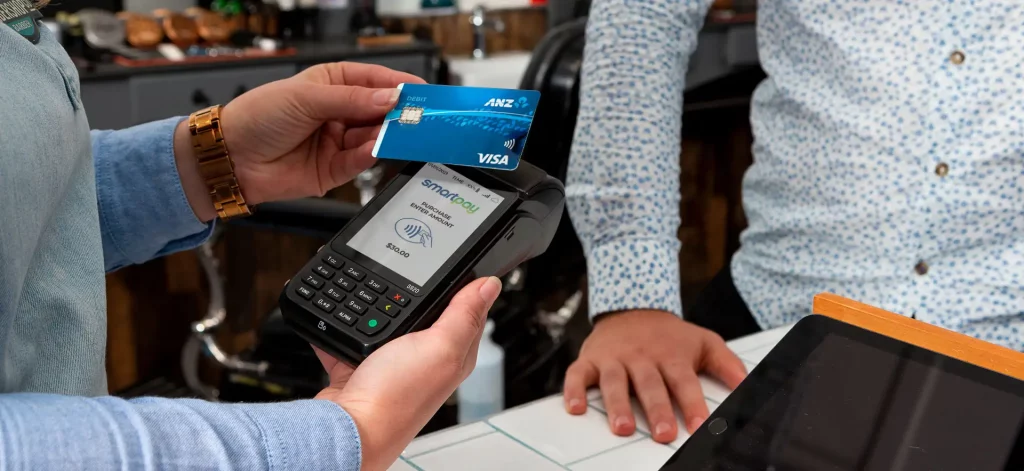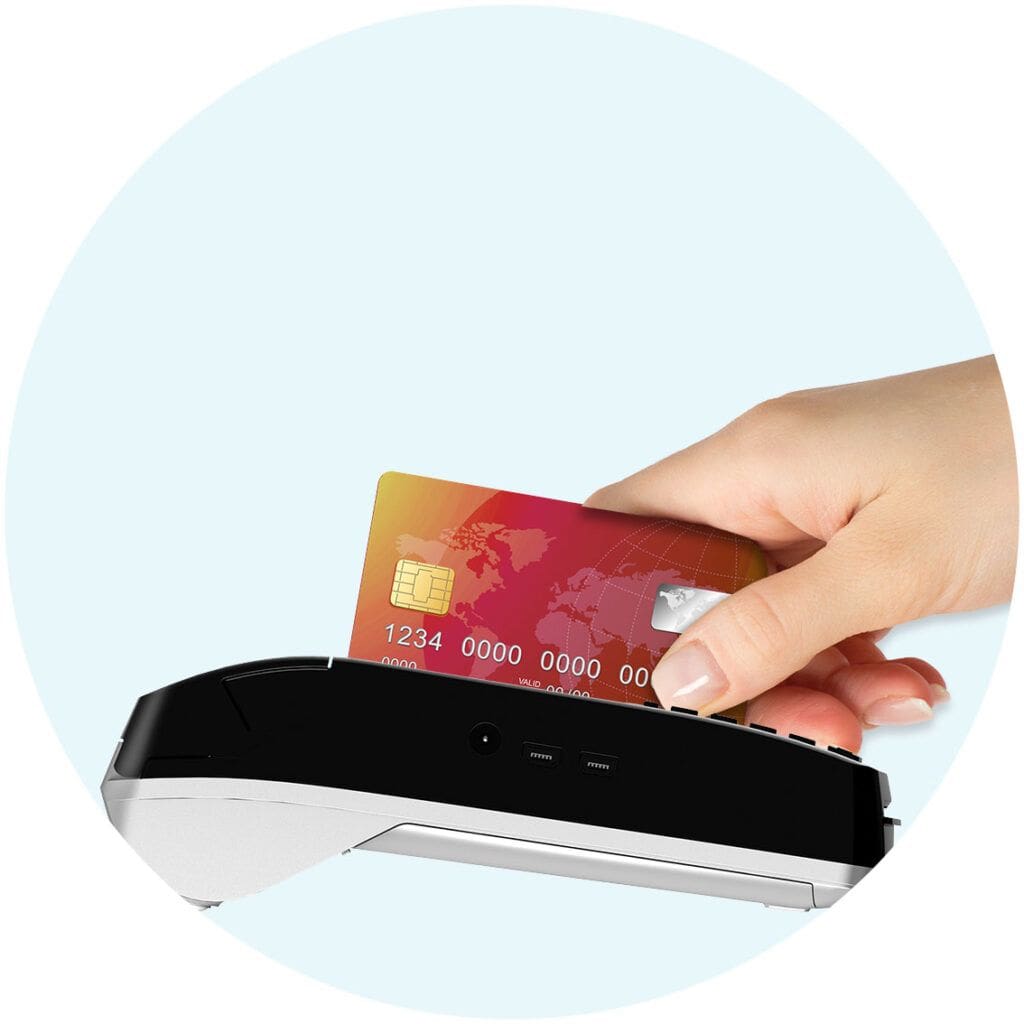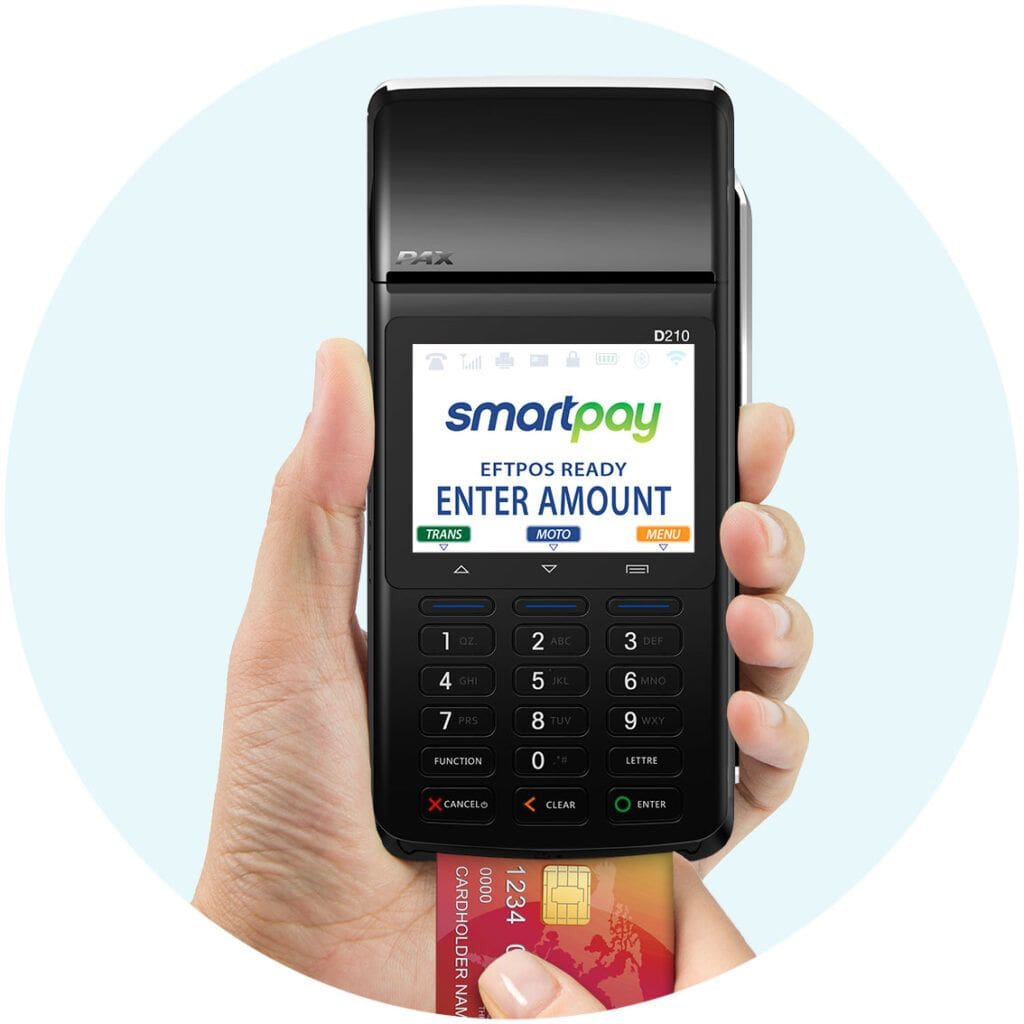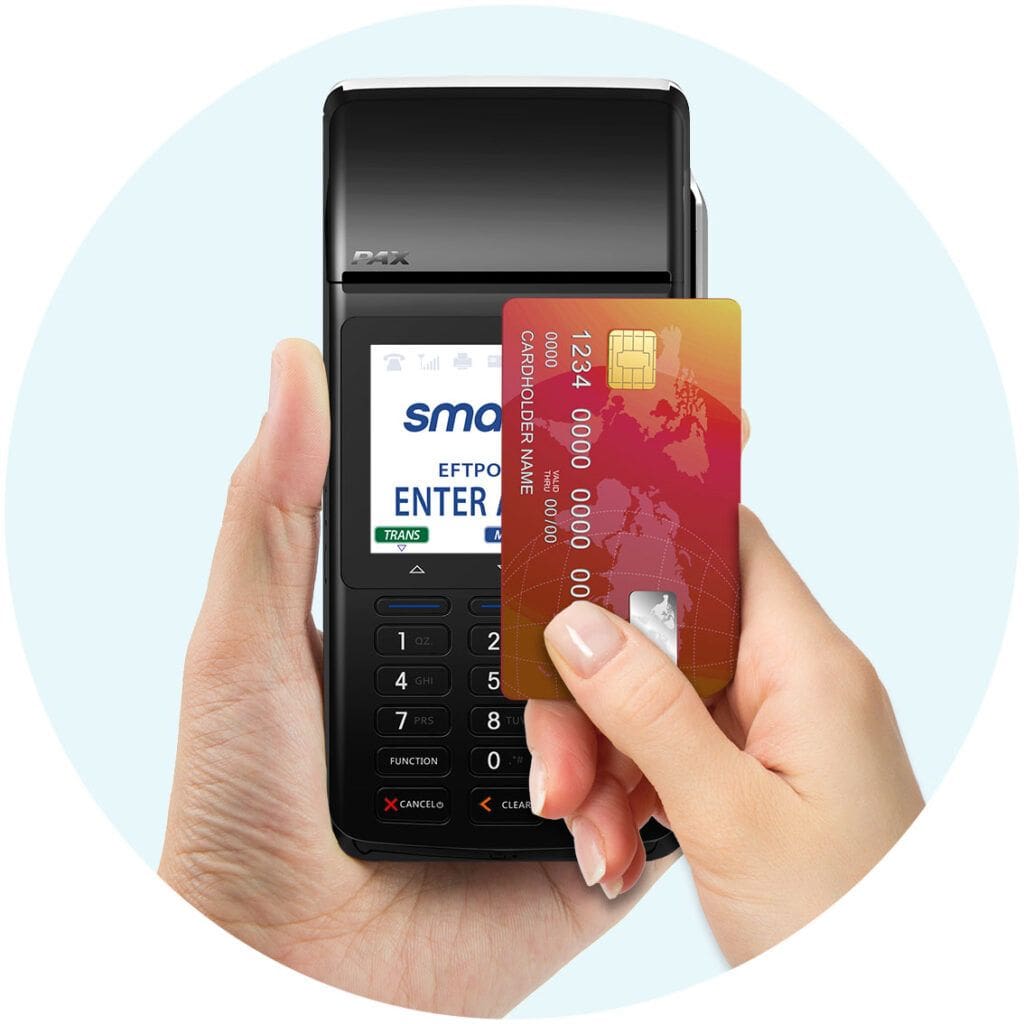
What is EFTPOS?
Are you a New Zealand business owner looking to take payments in an efficient and secure way? Look no further, because that’s where an EFTPOS solution comes in.
Knowing the ins and outs of EFTPOS is vital for any modern business. This technology simplifies the process of customers paying for goods and services, and also helps to streamline various operations of your business.
In this article, we will explain how this technology works, its advantages and how it can improve both business operations and the customer experience.
What does EFTPOS mean?
While a long acronym can sound complicated, EFTPOS is a simple technology that is easy to use and makes accepting payments a breeze.
EFTPOS is an electronic payment technology that allows customers to pay you for your goods and services and transfers funds directly from customers’ bank accounts to the merchants’. It is important to note that EFTPOS is the colloquial term for “card payments” in New Zealand.
What does EFTPOS stand for?
EFTPOS is an acronym for “Electronic Funds Transfer at Point of Sale“. It is a unique technology that allows for the electronic transfer of funds from customers’ bank accounts to your business account during a transaction, eliminating the need for physical cash or checks.
This is done through the use of payment cards, such as EFTPOS cards, debit or credit cards, at EFTPOS terminals located at points of sale. With technological developments, payments can now also be made using mobile wallets on smartphones and smartwatches.
By using EFTPOS, customers can quickly and easily make payments, while businesses benefit from the added security and convenience of electronic transactions.
This not only streamlines the payment process for your customers but also provides a high level of security for both parties because EFTPOS transactions are tracked electronically. In return, this provides a clear record of each transaction for both parties, which can be very helpful for your business accounting and tax purposes.
When did EFTPOS start in NZ?
EFTPOS technology was first introduced to New Zealand by the Bank of New Zealand in 1985 through a pilot program, with petrol stations. The system was developed by the Bank of New Zealand (BNZ) and the New Zealand Retailers Association (NZRA) to speed up the checkout process and reduce the need for cash and checks.
In 1989, the system was officially launched and spread rapidly in the 1990s with an increase in both; EFTPOS cards and EFTPOS machines. By 1997 EFTPOS became the most popular form of payment in New Zealand.
Today, EFTPOS is run by two major financial providers. The larger provider, Worldline (formerly Paymark Limited), purchased it in 2018 from NZ’s 4 major banks. The second provider is fully owned by VeriFone Systems, following its sale by ANZ New Zealand in December 2012.
Nowadays, EFTPOS is widely used in New Zealand by businesses of all sizes, from small retailers to large corporations, and it has become one of the most common ways to process transactions in the country. The latest EFTPOS terminals also support additional payment technologies like contactless cards, credit cards and mobile payments from smart devices.
Worldline now reports a market share of about 70% of all transactions with over 150,000 terminals and 85,000 merchants on their network. Smartpay was the first EFTPOS supplier to become a Worldline (previously Paymark) Partner and Accredited Reseller.
Today, Smartpay is the largest direct connector of EFTPOS terminals to Worldline to provide secure, reliable and rapid payment transactions.
Smartpay Holdings Limited is the listed Company trading as Smartpay (“NZX:SPY, ASX:SMP”). Founded in 2004 and headquartered in Auckland, Smartpay is Australia and New Zealand’s largest independent full-service EFTPOS provider. Servicing over 35,000 merchants with approximately 48,000 secure and feature-rich EFTPOS terminals in both countries.
Who is involved during EFTPOS transactions?
An EFTPOS transaction in New Zealand involves several parties:
- Customer: The individual who initiates the transaction by making a purchase using their EFTPOS, debit or credit card.
- Merchant: The business that accepts the customer’s payment and processes the transaction through an EFTPOS terminal.
- Merchant Bank: The financial institution with which the merchant has an account and where the funds from the transaction will be deposited.
- Payment Network: The infrastructure that enables the transfer of funds between the customer’s bank and the merchant’s bank, such as Wordline.
- Card Issuer: Financial institution that issued the customer’s debit or credit card.
- Acquiring Bank: The bank that is responsible for settling the transactions with the customer’s bank, and the Payment Network (this can also be your merchant bank).
- Scheme (such as Visa, Mastercard, AMEX): The network that facilitates the transfer of funds between the cardholder and the merchant and manages the payment process through the rules and regulations set by the scheme. This party is involved in the transaction whenever a “scheme” transaction like a contactless or credit payment is made.
How does EFTPOS work?
Accepting payments with EFTPOS is easy. There are different ways to process payments, and it’s important to know the differences.
EFTPOS and debit card payments processed by inserting or swiping have a fixed monthly network fee for the merchant.
However, contactless, mobile, and credit card payments have additional merchant service fees (MSF) as a percentage of the total transaction cost.
By understanding more about EFTPOS, merchants can make better-informed decisions on which payment methods to accept and how to manage costs effectively.
Here is how EFTPOS payments work explained in 3 easy steps:
Step 1: Customer initiates payment
When you start a transaction by entering the purchase details into the terminal, your customer then uses their card (or device) to make a payment. This can be done in 3 ways:
- Swiping: Customers swipe their card’s magnetic strip through the terminal and enter their PIN. However, this method may put them at a higher risk of card skimming.
- Inserting: Customers insert the chip side of their card into the terminal, then enter their PIN. This method is more secure thanks to the EMV chip technology (Europay, MasterCard, and Visa).
- Contactless: With NFC technology, customers can complete a payment in seconds by just holding their card (or device) near the terminal. In New Zealand, there’s a limit of $200 for contactless transactions without a PIN. However, this is processed as a “scheme” transaction and incurs an additional fee to accept.

Swipe
Swipe the magnetic strip through the terminal and enter their PIN (personal identification number)

Insert
Insert their chip card into the terminal and enter their PIN

Tap or wave (Contactless)
Tap or wave their card (or other contactless payment device) over the terminal and make a contactless payment
Step 2: Processing the transaction
When a customer swipes or inserts their card on the EFTPOS machine, the terminal sends a payment request to the customer’s bank using the payment network. The transaction gets approved if the customer has enough funds, otherwise, it’s declined.
If the customer taps the card or chooses credit, the data exchanged includes more parties in the back-end, including the issuing scheme and the acquirer.
All the payment data exchanged is encrypted to ensure security and privacy. The process of exchanging data between the merchant bank, the payment gateway, and the customer’s bank is quick – taking place in a matter of seconds.
Step 3: Settlements
This step only involves the merchant. For the money to hit your account, your terminal needs to ‘settle’. This is like cashing up and depositing the earnings at the bank.
The terminal does this automatically once a day during your “settlement window”, where the EFTPOS network will ensure all the money held for you by the acquiring bank moves to your merchant bank, which normally deposits it in your bank account the next business day (unless it’s a weekend or public holiday).
Advantages of EFTPOS for your business
As a small business owner, introducing EFTPOS to your business can bring several advantages, including:
- Increased customer convenience: EFTPOS allows customers to make payments using their debit or credit cards, eliminating the need for cash or check transactions. This means that customers can make payments quickly and easily, increasing the speed of service and overall customer satisfaction.
- Reduced cash handling: With EFTPOS, there is no need to handle cash and make change, which not only saves time but also reduces the risk of theft and cash handling errors.
- Increased sales: EFTPOS allows customers to make purchases without needing to have cash on hand, which can lead to an increase in sales. This can be especially beneficial for businesses that sell expensive items.
- Improved cash flow: With EFTPOS, funds are transferred directly from the customer’s account to the business’s account, which means that businesses can access funds quicker and more efficiently.
- Better record keeping: EFTPOS terminals automatically record transactions, providing businesses with accurate and detailed records. This can help with accounting and financial reporting.
- Increased security: EFTPOS transactions are secure, meaning that businesses can feel confident in accepting card payments without worrying about fraud.
How Smartpay can help your business
Nearly every business can benefit from accepting EFTPOS and experience smoother payments. Whether you are in Retail, Hospitality or a Taxi service, Smartpay has a range of tailored EFTPOS solutions for all businesses – regardless of size and industry.
As EFTPOS payments specialists with over 20 years of experience, we take pride in supporting Kiwi business with tailored payment solutions. We have a range of EFTPOS terminals that are available with POS integrations and payment features which our team develops in-house. Our team can help you customise your payment solution exactly as per your business needs.
Get in touch with us today to discuss how we can help.